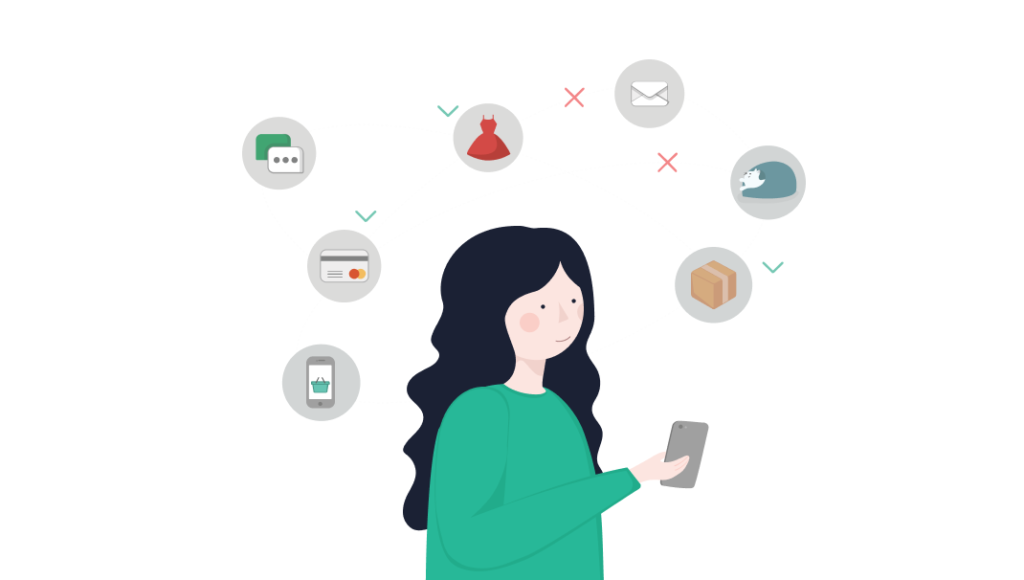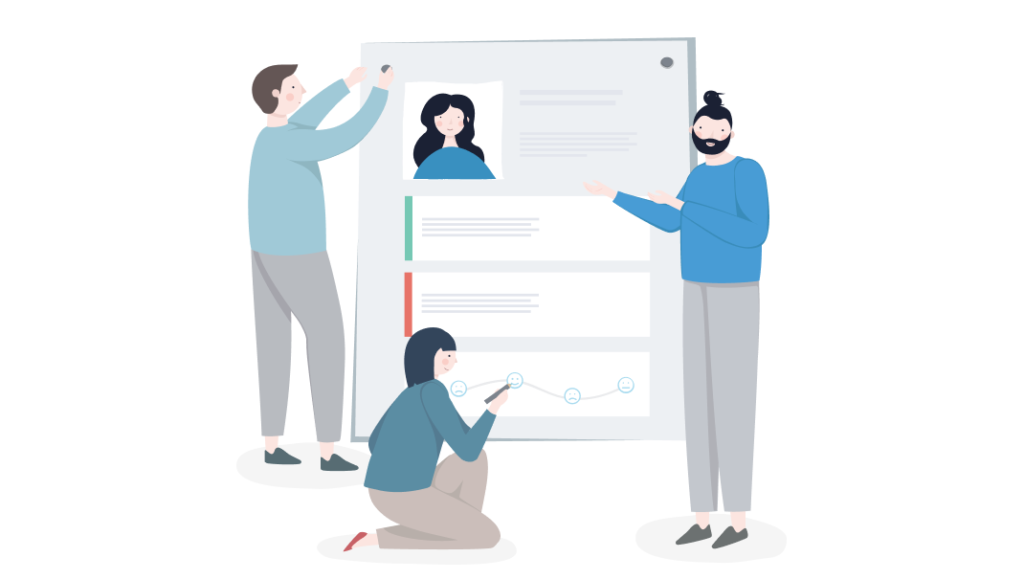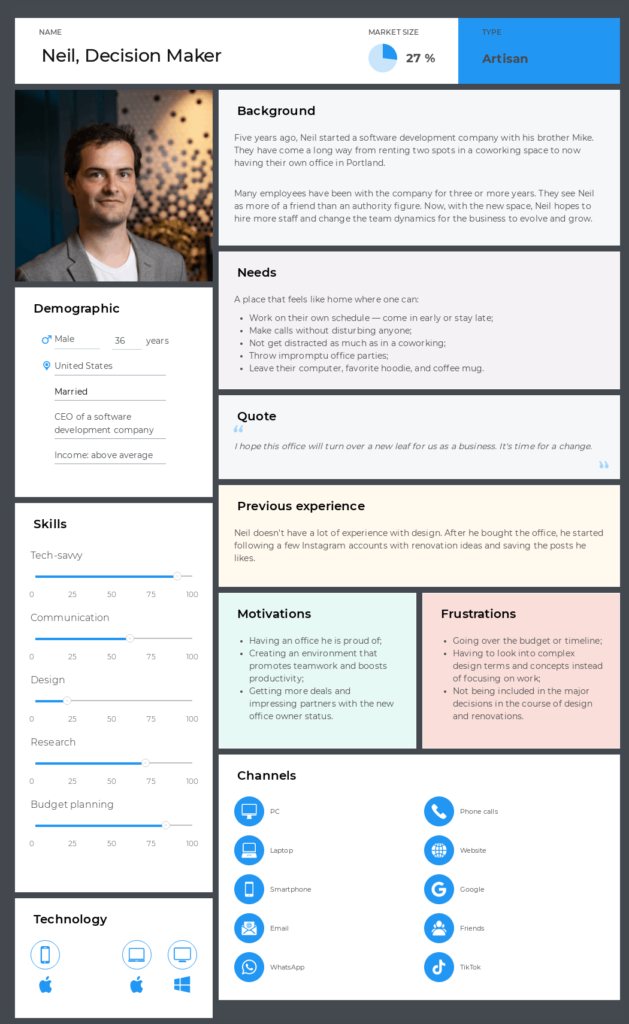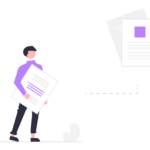Have you ever wondered how companies seem to know what you want and need? It's not magic, it's psychographic segmentation based on market research. This methodology allows businesses to understand their customers on a deeper level, tapping into their personalities, values, and lifestyles to create targeted marketing campaigns or brand positioning that truly resonate with their target audience.
In this article, we'll take a deep dive into the world of psychographic segmentation and explore how it's revolutionizing how companies reach and engage with their customers. From identifying key personality traits to understanding consumer behaviors, we'll show you how this cutting-edge methodology can help you take your marketing to the next level.
So whether you're a seasoned marketer looking to up your game or a curious consumer wondering how companies seem to know you so well, our article is for you. Get ready to unlock the secrets of the human psyche, see psychographic segmentation examples, and discover the power of such segmentation.
Contents
Psychographic segmentation: definition

As a seller of goods or services, you are well aware that customers come in with varying behavioral patterns, lifestyles, motivations, and preferences, much like an assorted box of candies. You can try to sell the same thing to everyone, but you'll likely only resonate with a small portion of your potential customer base. Enter psychographic market segmentation.
Psychographic segmentation refers to categorizing your target audience based on their attitudes, values, personalities, and behaviors. By adopting this method, you can delve into the psyche of your audience and customize your promotional content to resonate with their wants and aspirations. Again, it's about figuring out what makes your audience tick and using that knowledge to build a connection with them.
Let's say a cosmetics company launched a new line of lipsticks. Some customers may be interested in only natural and organic products, while others may be more concerned with bold colors and trendy packaging. Learning more about psychographic characteristics enables that company to tailor their marketing messages to each group in a way that resonates with them.
Psychographics and demographics: which way to go?

In the world of market segmentation, there is one more widely used segmentation type, the demographic one.
Demographic segmentation is the practice of dividing a market into different age ranges, genders, income levels, or other quantifiable attributes. This type of segmentation is, in a sense, very traditional; businesses widely use it, and there are reasons for that. For instance, a fast-food chain may use a demographic profile to target families with children by offering kid's meals or happy meals.
On the other hand, psychographic segmentation seeks to understand the underlying reasons behind people's behavior, providing marketers with advantages in various scenarios. For example, a sustainable clothing brand may appeal to consumers who value eco-friendly products instead of those who prefer fast fashion.
Demographic segmentation is handy for understanding the basic components of one's audience, but it does not go beyond surface-level details. Individual preferences and behavior are trickier to ascertain using this traditional method of grouping consumers. Therefore, psychographic segmentation is a better tool for creating marketing strategies that connect with potential customers.
So, yeah, it's crucial to know who your audience is in terms of demographics. But it's also essential to create a customer’s psychographic profile that gets to the root of what drives people to buy.
It's no longer enough to know that women aged 18-34 want shoes. We need to understand why they want specific shoes and when they want to buy them. As the market becomes more complex, marketers must invest in various segmentation types to create targeted, engaging campaigns specific to their audience.
Benefits of psychographic segmentation
While other approaches, such as geographic or demographic segmentation, have their merits, psychographic segmentation delves much deeper into understanding customers’ core values and beliefs. But that’s too broad, so let’s look closer at psychographic segmentation advantages.
Here are some benefits of psychographic segmentation:
A better understanding of customer needs and preferences
By segmenting customers based on psychographics, businesses acquire a more profound comprehension of what motivates and drives their customers' behaviors. Speaking of examples, a company might learn that a specific group of customers values environmental sustainability and ethical sourcing in their products and can tailor their products and marketing message accordingly. That not only allows for a more personalized approach but also creates a stronger sense of connection and loyalty.
Improved marketing message
With psychographic segmentation, businesses can create marketing messages that personally resonate with customers. By tapping into their values, interests, and lifestyles, brands can create content that feels relatable and authentic. This will lead to higher engagement rates, better retention of customers, and an increased likelihood of positive reviews and referrals.
For instance, a company that offers online courses for professional development may identify a psychographic segment of customers who value continuous learning and career advancement. The next step is creating marketing messages that emphasize the flexibility and convenience of their online courses, the quality of their instructors and course materials, and the potential for career growth and advancement. This messaging would resonate with this segment of customers and will encourage them to engage with the brand, enroll in more courses, and recommend the company to others who share their interest in professional development.
Enhanced product development
Psychographic segmentation can also inform product development, allowing businesses to create products that align with the values and preferences of their target market. For instance, a company that identifies a customer segment that values convenience and time-saving may choose to develop a product that is simple and easy to use. Even if it means sacrificing some features or aesthetic design to increase sales.
More effective targeting
Businesses can target their marketing efforts more effectively by identifying specific audience segments. For example, a travel company that knows its customers are passionate about sustainable tourism can create specialized packages that cater to this preference. That allows for more efficient advertising spend, resulting in higher ROI.
Make use of different psychographic segmentation approaches
Psychographic segmentation is an umbrella term that covers many types of this customer grouping. So, let's dive in and explore the different psychographic segmentation examples.
Lifestyle segmentation

Lifestyle is the most common type of psychographic segmentation. It covers groups of people with similar lifestyles, interests, and values. For example, people who love adventure sports like skydiving, bungee jumping, and rock climbing form one lifestyle segment, while book lovers belong to another. Companies selling products and services related to these lifestyles can use this segmentation to target their ideal audience.
Personality segmentation

As the name suggests, this approach divides people based on their personalities, attitudes, and behaviors. People with different personalities consume products and services differently. Just like introverts who prefer reading books or listening to music over going out to parties and extroverts who crave social interaction. Companies can use personality segmentation to cater to particular personality traits and provide tailored marketing experiences.
Back to our introvert vs. extrovert example, let's imagine there’s a company that sells headphones that wants to create a marketing campaign that targets introverts and extroverts differently. For introverts, they might create ads emphasizing the benefits of noise-canceling technology, allowing them to fully immerse themselves in their music or audiobooks without any distractions. They might also highlight the comfort and portability of their headphones, making them ideal for solo activities like reading or traveling.
On the other hand, for extroverts, the company might create ads that showcase the social aspects of their headphones, such as the ability to share music with friends or use them for group activities like working out or dancing. They might also highlight the headphones' stylish design and disruptive features, making them a must-have accessory for social events and gatherings.
By tailoring their marketing messages to the specific needs and preferences of introverts and extroverts, the company can increase the likelihood of attracting and retaining customers from both segments.
Behavioral segmentation

The behavioral segmentation approach is all about how people behave or respond to products and services. Marketers can use this segmentation to identify customers who prefer certain brands or products, what factors influence their purchasing decisions, and what product attributes they prioritize.
A company that produces running shoes may segment its market based on its customers' behaviors. For example, it may find out that some customers are regular runners who prioritize durability and comfort over style, while others may be occasional runners who prioritize style and price.
Based on these behavioral characteristics, the company can offer targeted marketing campaigns and develop product lines catering to each customer group. For example, the company may create a line of shoes focusing on durability and comfort for regular runners and a line focusing on style and price for the occasional runners. This approach helps the company ensure that its marketing messages resonate with each customer group and that its products meet their specific needs and preferences.
Values-based segmentation

This method of market segmentation categorizes individuals according to their shared values, beliefs, and attitudes. It's a powerful tool for brands that want to show their social responsibility, such as environmentally friendly products or ethical companies.
Let’s consider the Body Shop. It's a beauty and personal care brand that uses values-based segmentation as part of its psychographic marketing strategy. The company is known for its commitment to ethical and sustainable practices, including using natural ingredients, supporting fair trade, and campaigning against animal testing.
They appeal to consumers who prioritize these values and are willing to pay for products that align with their beliefs. By focusing on values-based segmentation, the company created a loyal customer base. The base that appreciates the quality of its product or service and its social responsibility. Sounds great, huh?
Attitude segmentation

Attitude segmentation is about dividing people based on their attitudes toward a particular product or situation. Examples of this type of segmentation include "green" customers concerned about the environment and "price-sensitive" customers who prioritize getting a bargain over brand loyalty.
Of course, there may be more types of psychographic profiles. And you may mix those to gain more insights into your customers, thus creating more effective marketing campaigns that generate actual results.
How to create a psychographic segment of your audience?
Creating a psychographic segment of your audience can be challenging. After all, gathering psychographic data requires more effort than collecting demographic data. But we have compiled a few steps to help you approach the process systematically and obtain the most objective psychographic segment possible.

Steps to create a psychographic segment:
Step one. Conduct market research
Start with collecting data on your audience—their activities and interests, hobbies and opinions—through surveys, interviews, and social media analytics. Doing this will help you identify trends and patterns to inform your psychographic segments.
Ways to collect customer psychographic data
Doing psychographic research can be challenging. So let’s explore some effective ways to collect relevant data and tips to make the process more efficient:
- Surveys. Use surveys to ask customers about their social status, interests, values, personality characteristics, lifestyle, and opinions.
- Social media analytics. Analyze customer interactions on social media to gain insights into their interests, behavior, and preferences.
- Interviews and focus groups. Conduct one-on-one interviews or group discussions with customers to gather in-depth psychographic data.
- Website analytics. Analyze website data to understand how customers interact with your website, what pages they visit, and what products or services interest them.
- Purchase history. Analyzing customer purchase history can provide insights into their interests, values, and behavior.
- Customer Service Data. Analyzing customer service interactions can provide insights into their personality characteristics, social class details, behavior, and preferences.
- Talking with your colleagues. Customer-facing staff can provide a lot of psychographic information related to your audience's personality, lifestyle, social class, habits, preferences, etc.
By using these methods, businesses can gain a better understanding of their customers' psychographics, which can help inform marketing strategies and improve customer experiences.
Step two. Look beyond demographics
While demographic data such as age, gender, and location are important, it doesn't tell the whole story. Psychographic segmentation looks at behaviors and attitudes, which can provide a more accurate view of your audience.
Step three. Identify motivations
What motivates your audience? Are they seeking adventure, security, or recognition? Understanding your audience's underlying motivations can help you craft messaging that speaks directly to their desires.
Step four. Analyze lifestyle factors
Does your audience value health and wellness, or are they more focused on luxury and indulgence? What are their purchasing habits, and how do they spend their free time? Factoring in lifestyle factors can help you better understand your audience's priorities and interests.
Step five. Create an artifact
To give your team a clear picture of your customer base, it's important to create a visual representation that brings all the pieces together. One effective method is to use psychographic data to craft fictional representations of different customer types. For that, you can utilize any tool that works best for you. Or try the UXPressia Persona creation tool to create a persona profile that's both user-friendly and let's you export high-quality documents. This approach will allow you to create a comprehensive persona that truly comes to life.

Wrapping up
Psychographic segmentation is a powerful tool for businesses looking to create a more personalized marketing approach. By understanding customers on a deeper level, companies can not only tailor their marketing efforts. They also create products that are better suited to their audience's unique preferences. Ensuring that messages and products align with customer values maximizes the chances of customer acquisition. Besides, it improves retention and ensures that customers continue to advocate for the brand even after purchasing. So, whether your business is big or small, adopting psychographic segmentation can help take your marketing strategies to the next level.





